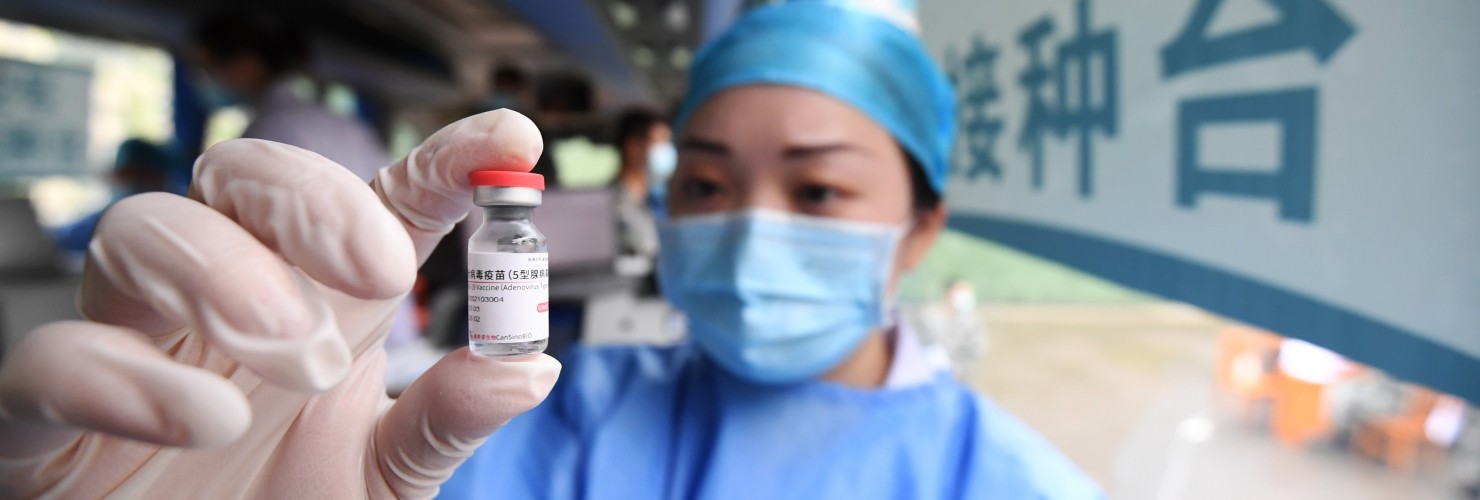

Europe shouldn’t underestimate the global appeal of China’s vaccine diplomacy
Western media coverage tends to downplay the success of China’s vaccine development and vaccine diplomacy, but Europe should not underestimate the appeal of Beijing’s offer. The failure of rich countries to address equitable global access to COVID-19 vaccines and the West’s absence from the vaccine diplomacy game has provided China with a reputational win.
Recent comments by the director of the Chinese Center for Disease Control (CDC) about the “not-high protection rates” of current vaccines have been seized upon by headlines to imply the poor quality of Chinese jabs. The comments, which included praise of mRNA vaccine efficacy, mark a rare break with the official state narrative on China’s vaccine superiority, but they don’t reveal anything new or surprising. Most importantly, the choice to purchase Sinovac or Sinopharm vaccines is not primarily political, but pragmatic.
The efficacy of Chinese vaccines
We have long known that available Chinese vaccines do not offer the same level of protection as new-tech mRNA vaccines from US and European manufacturers, but in the context of a global vaccine shortage, “good enough,” is an attractive proposition.
There are three Chinese vaccine makers currently supplying the global market: Sinovac, CanSino, and state-owned giant Sinopharm. Trials in Brazil showed that CoronaVac, the vaccine produced by Chinese company Sinovac, has an efficacy rate of 50.4 percent, a number supported by more recent studies in Brazil and Chile. Meanwhile, Sinopharm claims that its primary vaccine has an efficacy rate of 79.34 percent. The most recent Chinese addition to the global market, a one-shot vaccine from CanSino, has shown an eventual efficacy rate of 65.7 percent. For comparison, British-Swedish manufacturer AstraZeneca claims an efficacy rate of 76 percent, US Johnson & Johnson 63.3 percent globally and 74.4 percent in US trials, while Russia’s Gamaleya Institute claims 91.6 percent for its vaccine Sputnik V.
The reluctance of Chinese vaccine makers to publish their full data has fueled suspicion among some experts, and efficacy rates are often variable between trials. But available information indicates that the Chinese shots meet the World Health Organization’s (WHO) threshold for Covid-19 vaccine efficacy of 50 percent. It should also be noted that 50 percent efficacy still offers much more protection against severe illness than no vaccine.
Speculation as to the efficacy of Chinese vaccines does not undermine their utility when there is no other option to numerous countries.
The problem of equitable access
Our best chance of avoiding vaccine-trumping mutations and our surest path toward global economic recovery is to rollout vaccines across the world at the same time, prioritizing the vulnerable regardless of nationality. COVAX, a global initiative led by the World Health Organization (WHO) among others, was initially designed as a collective mechanism that would pool resources and distribute vaccines equitably among 190 participating countries.
Unsurprisingly, it didn’t work out that way: national – and in the case of the EU, regional – interests trumped those of humanity as a whole, and rich countries scrambled to secure purchase agreements, pushing those with fewer means to the back of the queue.
Though it still has an important role to play, COVAX now essentially functions as a charitable mechanism. Even if it succeeds, it will only cover 20 to 30 percent of participating countries’ populations, far short of even the low, early estimates required for herd immunity of 70 percent. Although a handful of rich countries are now nearing the light at the end of the tunnel, the problem of equitable access to vaccines – and thus an end to the pandemic – remains fundamentally unsolved. Just 0.2 percent of total vaccine supplies have found their way by donation to low income countries so far.
Global shortage of vaccines
Of course, even rich countries have had difficulties sourcing vaccines they have purchased. Despite the unprecedented efforts underway to scale up vaccine production capacity, the world is facing severe and likely ongoing vaccine shortages. This is the backdrop against which we need to assess China’s vaccine exports.
Countries hit hard by the pandemic are desperately seeking vaccines, and China, with low infection rates and limited urgency to vaccinate at home, has its books open for orders. They may not be the best, nor even the cheapest, but in some cases, Chinese vaccines are the only ones available.
Chinese manufacturers are also helping their partners in countries like the United Arab Emirates, Egypt, and Indonesia to build their own vaccine production capacity – a situation that is highly desirable from an equitable access standpoint.
And so we have arrived at a situation where China can credibly claim to be helping plug the gap in global vaccine supply, especially the gap that exists between the rich and poor countries. Although the EU is exporting millions of vaccines, most of these doses are going to other high-income countries. Those that are supplying middle income and low-income countries are other middle-income countries: China, India, and Russia.
The narrative of China’s helping hand
As far as donations of vaccine supplies are concerned, Beijing is winning just by showing up. COVAX, to which the EU is the lead financial donor, has now kicked into gear, but the EU has halted plans to donate vaccines directly due to shortages at home, while the US is only now entering the donation game. The quantity of doses donated by China are not very large – 14 million so far – only go so far in addressing countries’ needs. But they are at least very visibly getting jabs into arms in developing countries.
Beijing seeks to position itself as a leader of the developing world, and vaccine exports provide a useful tool with which Beijing can deepen relationships in the global South. Current Chinese vaccines may fall short of the golden standard set by Western mRNA vaccines, but they go a long way in the current crisis. In the distant future, Beijing may need to offer a more competitive vaccine, but by then it will likely have added an mRNA vaccine to its portfolio.
The failure of rich countries to address worldwide equitable access to vaccines has opened up room for China to credibly claim that it is doing more than the West to help developing countries. There is fertile ground for this narrative in the global South, where it is commonplace to see rich countries as self-interested and exploitative.
Against the backdrop of worsening tensions between China and the West, it will be increasingly important for Beijing to secure support among what was called in the Cold War the “third world.” We should not undervalue developing country diplomacy in our “systemic rivalry” with China, nor underestimate the successes of China’s vaccine diplomacy.
This article was first published by the German Development Institute.
